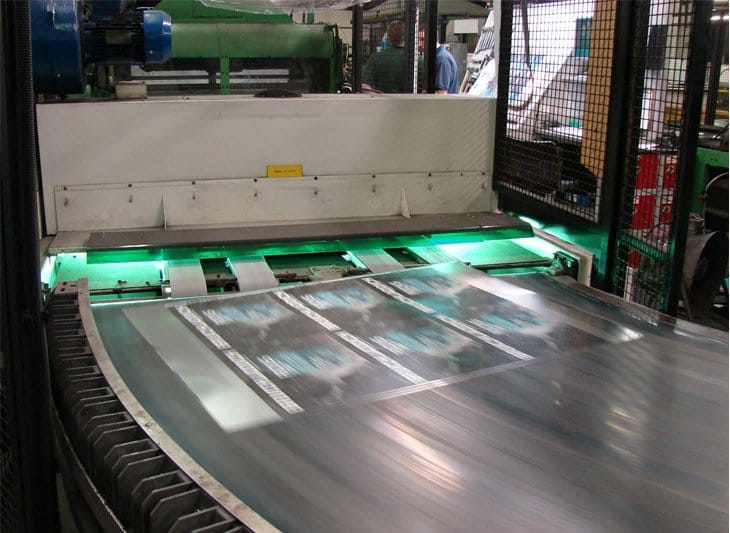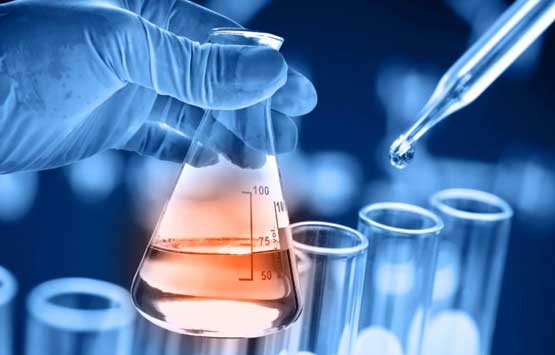
Photoinitators
A photoinitiator is a molecule that, when exposed to radiation, undergoes photodissociation to yield a reactive species (anions, cations, or free radicals). These reactive species can initiate desired chemical reactions. Most commonly, photoinitiators are used to induce polymerization of various compounds.
For over 40 years, Hampford Research Inc. has manufactured several types of photoinitiators. Our story began with free radical photoinitiators based on the hexaarylbiimidazole (HABI) molecule. Throughout the years we also developed a strong presence within the diaryliodonium salt photoacid generator market, as well as many other photoinitiators along the way.
Free Radical Photoinitiators
Free radical photoinitiators, typically referred to simply as photoinitiators (PIs), induce polymerization through double bonds. They are commonly used in acrylate, methacrylate, styrene, and many other systems. PIs are classified into two categories, Norrish type I and Norrish type II. Norrish type I PIs are unimolecular. Upon irradiation, type I PIs undergo homolytic cleavage, generating radical species. Norrish type II PIs are bimolecular. Type II PIs require the presence of a coinitiator from which to abstract a hydrogen atom, to generate free radicals.
HABI photoinitiators operate in a unique situation, as a cross between type I and II. Upon irradiation, they split into two radicals like a type I PI. Although, those lophyl radicals are highly stable and have low reactivity. As a result, HABIs require an external hydrogen donor or chain-transfer agent, similar to a coinitiator, to increase their reactivity and induce polymerization, like a type II PI. Hampford Research experts can help you choose the ideal combination for your application.
Through careful modification of the substituents on the aryl groups, HRI has been able to significantly improve the performance of HABIs into the LED wavelength range. These innovative compounds resist oxygen inhibition and their high molecular weights make them ideal for applications where low migration characteristics are paramount.
| Product Name | Function | CAS Number | HRI Prod. # |
|---|---|---|---|
| Camphorquinone (CQ) | Photoinitiator type II, sensitizer | 10373-78-1 | FP5060 |
| Benzil Dimethyl Ketal (BDK) | Photoinitiator type I, sensitizer | 24650-42-8 | FP5067 |
| Bis(trichlorofluoro) HABI | Free radical photoinitiator, low migration | 2991098-03-2 | FP5414 |
| Dibromochalcone | Photoinitiator, sensitizer, sensitizing dye | 611-91-6 | FP5080 |
| o-Cl-HABI (BCIM) | Free radical photoinitiator with outstanding heat stability, low migration | 7189-82-4 | FP5380 |
| O-Ethoxy HABI | Free radical photoinitiator, low migration, halogen free | 29864-18-4 | FP5385 |
| 9-Phenylacridine | Photoinitiator type II, sensitizer, sensitizing dye | 602-56-2 | FP5400 |
| TCDM-HABI | Free radical photoinitiator, low migration, optimized for use with 365 and 385 nm LED lamps | 100486-97-3 | FP5450 |
| TMCH (4-MTD) | Photoinitiator type I, free radical generator | 3274-12-2 | FP5510 |
Photoacid Generators
Photoacid generators (PAGs), aka cationic photoinitiators, are molecules that absorb UV or visible light to generate acid. The generated acid initiates cationic polymerization. The most common usage is for ring-opening polymerization, as in epoxy or oxetane resins. Less commonly, PAGs are also used for addition polymerization, as is the case for vinyl ethers, as well as to induce cross-linking.
Hampford Research Inc. is a global supplier of iodonium-based and specialty photoacid generators. These highly engineered compounds offer unmatched photo speed, solubility, and temperature stability for both LED and broad spectrum applications.

| Product Name | Function | CAS Number | HRI Prod. # |
|---|---|---|---|
| Bis(4-cumyl)iodonium Tetraphenylborate | Photoacid generator | 1158840-74-4 | FP5028 |
| Bis(4-t-butylphenyl)iodonium Tetraphenylborate | Photoacid generator | 131725-16-1 | FP5041 |
| Bis(4-t-butylphenyl)iodonium Chloride | Photoacid generator | 5421-53-4 | FP5213 |
| OPPI | Asymmetric iodonium photoacid generator | 121239-75-6 | FP5386 |
| BisDDI SbF6 70% | Photoacid generator in reactive diluent | 71786-70-4 | FP5374 |
| HPPI 5225 | Asymmetric iodonium photoacid generator | 139301-16-9 | FP5225 |
| 2,4,6-Trimethylpyridinium Tosylate | High-performance, specialty photoacid generator | 59229-09-3 | FP5552 |
